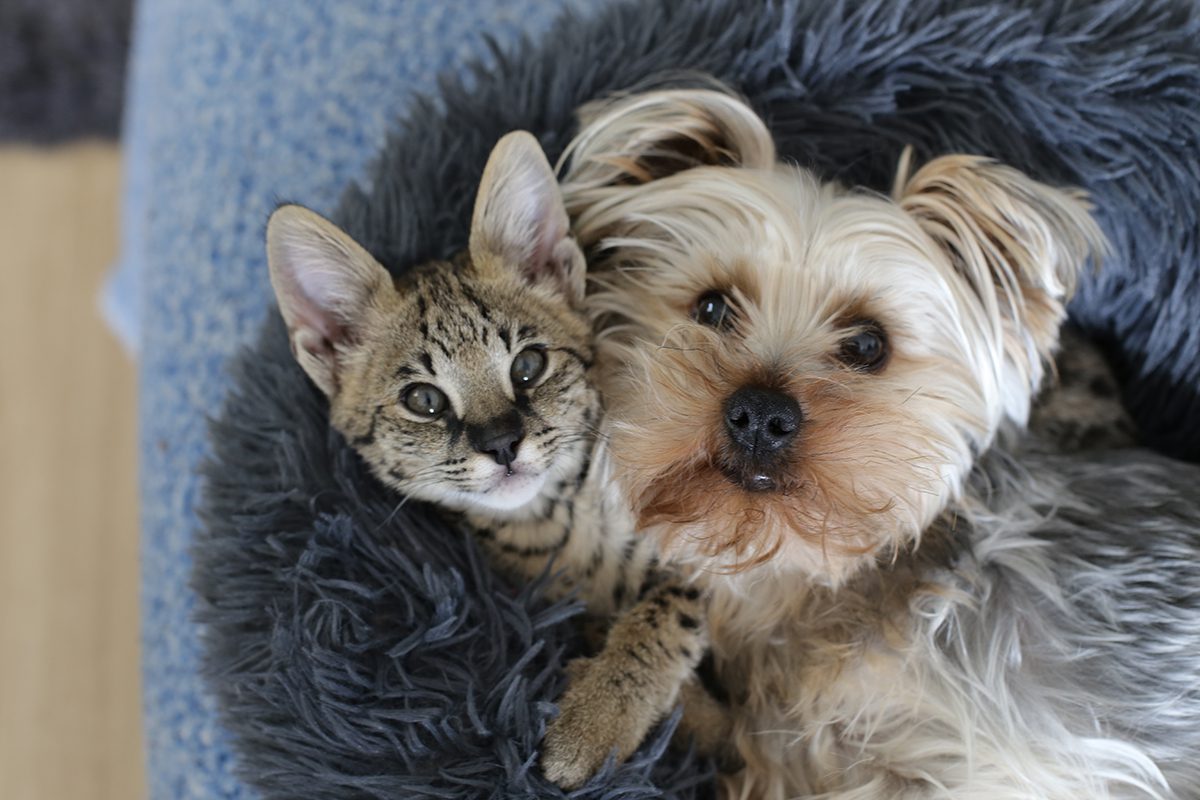10 Myths About Cats and Dogs

When it comes to our beloved cats and dogs, numerous myths have prevailed over the years. Some of these are harmless misconceptions, while others can potentially impact the well-being of our pets. As pet owners, it’s important to have accurate knowledge so that we can keep our furry family members safe and happy throughout their entire lives. Let’s take a look at 10 common myths about cats and dogs and set the record straight.
10 Myths About Cats and Dogs
- Myth: Dogs only see in black and white
This is a long-standing myth, but science tells us it’s not entirely accurate. Research has shown that dogs do see in colour, but their colour perception is not as rich or diverse as that of humans. Unlike humans who have three colour receptors (red, green, and blue), dogs only have two (blue and yellow). This means dogs can distinguish blue and yellow, but cannot perceive the range of colours from green to red.
- Myth: Cats always land on their feet
While it’s true that cats often land on their feet due to a unique skeletal structure and a phenomenon known as the “righting reflex,” it’s not always the case. Cats need a certain amount of time and height to turn their bodies during a fall. Therefore, a cat might not land on its feet if it falls from a low height. Furthermore, even if cats land on their feet, they can still sustain injuries from high falls, known as high-rise syndrome in urban environments.
- Myth: Dogs’ mouths are cleaner than humans’
Dogs are known to eat and lick various unsanitary items, yet this myth persists. While the bacteria in a dog’s mouth are different from those in a human’s mouth, this doesn’t make their mouths cleaner(that’s why free online platforms that list puppies also offer hygiene kits more often than not). Both species’ mouths are full of bacteria, many of which are species-specific. Therefore, it’s crucial to maintain proper dental hygiene for your dogs.
- Myth: Cats are solitary creatures
While it’s true that cats are more solitary compared to dogs, this doesn’t mean they prefer to be alone all the time. Cats, especially those that are socialised from a young age, can form close bonds with their human families and other pets. They might show their affection in more subtle ways than dogs, but they do enjoy social interaction.
- Myth: A wagging tail means a happy dog
A wagging tail does communicate emotional states, but it doesn’t always mean a dog is happy. Depending on the tail’s position and movement, it can indicate a variety of emotions, including fear, aggression, anxiety, and excitement. It’s important to read the whole body language of the dog and consider the context.
- Myth: Cats purr only when they’re happy
Cats do often purr when they’re content, but they also purr to self-soothe when they’re in pain or distress. Some cats may even purr when they’re near death. It’s important to know your cat’s usual behaviour and consult a vet if you notice any changes or signs of distress.
- Myth: Dogs are strictly carnivores
While dogs belong to the order Carnivora, they are not strict carnivores like cats. Dogs are actually omnivores, which means they can consume a variety of foods, not just meat. Wild canines eat fruits, vegetables, and berries, in addition to meat, and domestic dogs can also benefit from a balanced diet that includes these foods.
- Myth: Milk is good for cats
Contrary to popular belief, most adult cats are lactose intolerant. This means they lack the enzyme lactase, which is needed to digest lactose in milk. While kittens can digest their mother’s milk, they typically lose this ability as they grow, so giving your adult cat milk can cause digestive upset.
- Myth: Dogs age seven years for every human year
The idea that one human year equates to seven dog years is an oversimplification. The ageing process for dogs is more nuanced and varies with size and breed. Smaller breeds tend to live longer than larger ones. A more accurate approach to calculate a dog’s age in human years would be to count the first year as 15 human years, the second year as nine, and each subsequent year as five.
- Myth: Cats and dogs are natural enemies
This myth comes from the belief that dogs are pack animals, while cats are solitary, leading to an inevitable clash. However, cats and dogs can coexist peacefully and even become close companions if they are introduced properly and socialised from a young age. The key lies in understanding and respecting each species’ unique behaviours and communication styles.
Conclusion
Understanding the true behaviours and characteristics of cats and dogs can help us become more responsible and empathetic pet owners. It’s always important to question what we think we know and rely on scientific evidence and professional advice when it comes to our furry friends’ health and well-being.
